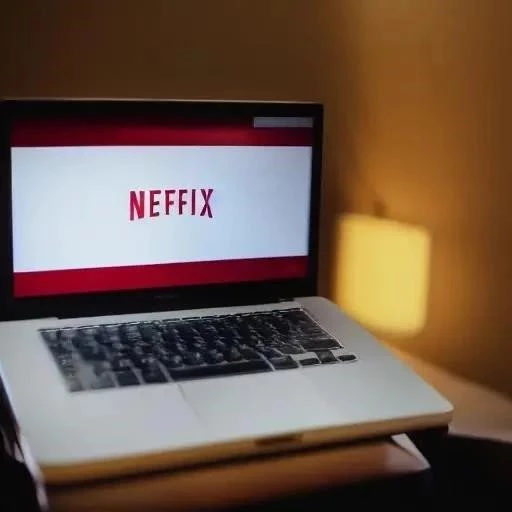Accessing the US Netflix library from Canada in 2020 presented a unique challenge for many streaming enthusiasts. The allure of a larger selection of movies and TV shows available on the US version was a significant draw. While Netflix operates globally, content licensing agreements often vary by region, leading to differences in available titles. So, how could Canadians circumvent these restrictions and enjoy the expansive catalog of US Netflix during that time? This article explores the methods, both technical and otherwise, that individuals employed to unlock this digital treasure trove.
One of the most popular methods for accessing US Netflix in Canada in 2020 involved using a Virtual Private Network (VPN). A VPN essentially masks your IP address, making it appear as though you are browsing from the United States. This allows you to bypass the geographical restrictions imposed by Netflix. However, Netflix actively worked to block VPN access, so finding a reliable VPN provider that consistently worked was crucial. Not all VPNs were created equal, and some were more successful at evading Netflix’s detection mechanisms than others.
- Paid VPN Services: These typically offered better speeds and more reliable connections, making them a preferred choice for streaming.
- Free VPN Services: While tempting, free VPNs often came with limitations such as slower speeds, data caps, and potential privacy concerns.
Selecting a VPN that specifically advertised its ability to unblock Netflix US was essential. Look for reviews and testimonials to ensure the VPN provider had a proven track record. Speed and server location within the US were also critical factors to consider for a smooth streaming experience.
Another method used to access US Netflix in Canada in 2020 was through DNS proxy servers. These servers reroute your DNS requests through a US-based server, effectively tricking Netflix into believing you are located in the United States. Unlike VPNs, DNS proxy servers typically didn’t encrypt your internet traffic, which could result in faster speeds. However, this lack of encryption also meant potentially lower security.
It’s important to remember that the process of accessing US Netflix from Canada in 2020 was an ongoing “cat and mouse” game. Netflix actively implemented measures to detect and block VPNs and DNS proxy servers, leading to periods where certain services would work and then suddenly stop. Users often had to switch between different VPN servers or DNS proxy servers to find one that was currently working.
While technically not illegal, using VPNs or DNS proxy servers to bypass geographical restrictions on Netflix raised questions about the ethics of circumventing content licensing agreements. By accessing content intended for US viewers, Canadians were potentially violating the terms of service of both Netflix and their chosen VPN or DNS proxy provider. However, many people still viewed it as a minor infraction, driven by the desire for access to a wider range of entertainment options.
Accessing the US Netflix library from Canada in 2020 presented a unique challenge for many streaming enthusiasts. The allure of a larger selection of movies and TV shows available on the US version was a significant draw. While Netflix operates globally, content licensing agreements often vary by region, leading to differences in available titles. So, how could Canadians circumvent these restrictions and enjoy the expansive catalog of US Netflix during that time? This article explores the methods, both technical and otherwise, that individuals employed to unlock this digital treasure trove.
Exploring VPN Options for US Netflix in Canada
One of the most popular methods for accessing US Netflix in Canada in 2020 involved using a Virtual Private Network (VPN). A VPN essentially masks your IP address, making it appear as though you are browsing from the United States. This allows you to bypass the geographical restrictions imposed by Netflix. However, Netflix actively worked to block VPN access, so finding a reliable VPN provider that consistently worked was crucial. Not all VPNs were created equal, and some were more successful at evading Netflix’s detection mechanisms than others.
- Paid VPN Services: These typically offered better speeds and more reliable connections, making them a preferred choice for streaming.
- Free VPN Services: While tempting, free VPNs often came with limitations such as slower speeds, data caps, and potential privacy concerns.
Selecting a VPN that specifically advertised its ability to unblock Netflix US was essential. Look for reviews and testimonials to ensure the VPN provider had a proven track record. Speed and server location within the US were also critical factors to consider for a smooth streaming experience.
Another method used to access US Netflix in Canada in 2020 was through DNS proxy servers. These servers reroute your DNS requests through a US-based server, effectively tricking Netflix into believing you are located in the United States. Unlike VPNs, DNS proxy servers typically didn’t encrypt your internet traffic, which could result in faster speeds. However, this lack of encryption also meant potentially lower security.
It’s important to remember that the process of accessing US Netflix from Canada in 2020 was an ongoing “cat and mouse” game. Netflix actively implemented measures to detect and block VPNs and DNS proxy servers, leading to periods where certain services would work and then suddenly stop. Users often had to switch between different VPN servers or DNS proxy servers to find one that was currently working.
While technically not illegal, using VPNs or DNS proxy servers to bypass geographical restrictions on Netflix raised questions about the ethics of circumventing content licensing agreements. By accessing content intended for US viewers, Canadians were potentially violating the terms of service of both Netflix and their chosen VPN or DNS proxy provider. However, many people still viewed it as a minor infraction, driven by the desire for access to a wider range of entertainment options.
Were There Other, Less Common Methods?
Beyond VPNs and DNS proxies, were there more obscure or technically complex methods utilized by determined viewers? Did some individuals attempt to use their own private servers located in the US to bypass restrictions? Or perhaps explore alternative DNS configurations beyond typical proxy services? What about using browser extensions specifically designed to spoof location data – were these ever a viable option, even for a short period?
Did Smart DNS Services Offer a Consistent Solution?
Smart DNS services, often touted for their speed advantages over VPNs, were they truly a reliable alternative for accessing US Netflix? Did they offer a more stable connection and were they less susceptible to Netflix’s blocking efforts? Was the trade-off in security – the lack of encryption – worth the potential gains in streaming performance and consistency?
What About Mobile Devices?
Did the methods for accessing US Netflix differ between desktop computers and mobile devices like smartphones and tablets? Were there specific apps or configurations required to bypass geo-restrictions on iOS or Android devices? Or was the experience relatively uniform across different platforms, relying primarily on VPN or DNS proxy configurations at the network level?
Ultimately, wasn’t the pursuit of US Netflix in Canada in 2020 a testament to the power of consumer demand and the ingenuity of individuals seeking access to content they felt entitled to? And hasn’t this ongoing battle between streaming services and geo-restriction circumvention shaped the landscape of online entertainment consumption in ways we’re still only beginning to understand?
The Future of Geo-Unblocking: What Lies Ahead?
Given the relentless efforts of streaming giants to protect their licensed content, and the equally persistent attempts of users to circumvent these restrictions, what does the future hold? Will VPN technology continue to evolve, becoming ever more sophisticated and harder to detect? Or will Netflix and other services ultimately develop foolproof methods of preventing geo-unblocking, effectively shutting down these loopholes?
Will Content Licensing Models Adapt?
Perhaps the more pertinent question is: will content licensing models themselves adapt to reflect the increasingly globalized nature of online entertainment? Could we see a future where content is licensed on a truly worldwide basis, eliminating the need for geographical restrictions altogether? Or will the complexities of international copyright law continue to perpetuate these artificial barriers, fueling the demand for workarounds?
Are There Other Options on the Horizon?
Beyond VPNs and DNS proxies, are there emerging technologies or strategies that could potentially offer new avenues for accessing geographically restricted content? Could decentralized VPNs, powered by blockchain technology, provide a more resilient and anonymous solution? Or might alternative streaming platforms, less beholden to traditional licensing agreements, emerge as viable competitors?
Considering all the factors involved, will the desire to watch US Netflix in Canada, or access any region-locked content, simply fade away? As streaming services expand their libraries and offer more globally available content, will the perceived need to circumvent restrictions diminish? Or will the allure of exclusive content, available only in certain regions, continue to drive users to seek out inventive and often technically challenging solutions? Ultimately, will accessing US Netflix in Canada ever become a truly seamless and universally accessible experience, or will it remain a game of technological hide-and-seek?
Back in 2020, Canadian Netflix subscribers often gazed longingly across the digital border, yearning for the richer content library available on US Netflix. But was there a way to breach this virtual wall and unlock the American streaming treasure trove? How could Canadians access the coveted US Netflix content, sidestepping those pesky geo-restrictions? Did it involve complex technical maneuvers, or were there simpler solutions readily available for those determined to expand their viewing horizons?
VPNs: Your Virtual Passport to US Netflix
One of the most common methods employed was using a Virtual Private Network (VPN). But how did these VPNs actually work? Did they magically transport your internet connection to the United States, fooling Netflix into believing you were a local viewer? And weren’t there different types of VPNs, each with its own set of pros and cons?
- Paid VPN Services: These typically offered better speeds and more reliable connections, making them a preferred choice for streaming.
- Free VPN Services: While tempting, free VPNs often came with limitations such as slower speeds, data caps, and potential privacy concerns.
Choosing the Right VPN
Selecting a VPN that specifically advertised its ability to unblock Netflix US was essential. Look for reviews and testimonials to ensure the VPN provider had a proven track record. Speed and server location within the US were also critical factors to consider for a smooth streaming experience. But how reliable were these reviews? Could you truly trust a VPN provider’s claims, or was there a risk of encountering frustrating buffering and connection issues? And what about the impact on your overall internet speed – did using a VPN significantly slow down your browsing experience?
DNS Proxy Servers: An Alternative Approach
Another method used to access US Netflix in Canada in 2020 was through DNS proxy servers. These servers reroute your DNS requests through a US-based server, effectively tricking Netflix into believing you are located in the United States. Unlike VPNs, DNS proxy servers typically didn’t encrypt your internet traffic, which could result in faster speeds. However, this lack of encryption also meant potentially lower security. But was this speed difference truly noticeable? And how significant was the security risk associated with foregoing encryption? Was it a trade-off worth making for potentially faster streaming?
The Cat and Mouse Game: Netflix vs. Geo-Restrictions
It’s important to remember that the process of accessing US Netflix from Canada in 2020 was an ongoing “cat and mouse” game. Netflix actively implemented measures to detect and block VPNs and DNS proxy servers, leading to periods where certain services would work and then suddenly stop. Users often had to switch between different VPN servers or DNS proxy servers to find one that was currently working. But how frequently did these blockades occur? Was it a constant battle, or did some VPNs prove more resilient than others? And how frustrating was it for viewers to constantly troubleshoot their connections, searching for a working server?
The Legal and Ethical Considerations
While technically not illegal, using VPNs or DNS proxy servers to bypass geographical restrictions on Netflix raised questions about the ethics of circumventing content licensing agreements. By accessing content intended for US viewers, Canadians were potentially violating the terms of service of both Netflix and their chosen VPN or DNS proxy provider; However, many people still viewed it as a minor infraction, driven by the desire for access to a wider range of entertainment options. But how aware were users of these terms of service? Did they fully understand the potential consequences of their actions, however minor? And did the perceived benefits of accessing a larger content library outweigh the ethical concerns?
Were There Other, Less Common Methods?
Beyond VPNs and DNS proxies, were there more obscure or technically complex methods utilized by determined viewers? Did some individuals attempt to use their own private servers located in the US to bypass restrictions? Or perhaps explore alternative DNS configurations beyond typical proxy services? What about using browser extensions specifically designed to spoof location data – were these ever a viable option, even for a short period? And what level of technical expertise was required to implement these more unconventional approaches?
Did Smart DNS Services Offer a Consistent Solution?
Smart DNS services, often touted for their speed advantages over VPNs, were they truly a reliable alternative for accessing US Netflix? Did they offer a more stable connection and were they less susceptible to Netflix’s blocking efforts? Was the trade-off in security – the lack of encryption – worth the potential gains in streaming performance and consistency? And how did Smart DNS services compare to traditional DNS proxy servers in terms of ease of setup and overall reliability?
What About Mobile Devices?
Did the methods for accessing US Netflix differ between desktop computers and mobile devices like smartphones and tablets? Were there specific apps or configurations required to bypass geo-restrictions on iOS or Android devices? Or was the experience relatively uniform across different platforms, relying primarily on VPN or DNS proxy configurations at the network level? And did mobile devices introduce any unique challenges or limitations to the process?
Ultimately, wasn’t the pursuit of US Netflix in Canada in 2020 a testament to the power of consumer demand and the ingenuity of individuals seeking access to content they felt entitled to? And hasn’t this ongoing battle between streaming services and geo-restriction circumvention shaped the landscape of online entertainment consumption in ways we’re still only beginning to understand?
The Future of Geo-Unblocking: What Lies Ahead?
Given the relentless efforts of streaming giants to protect their licensed content, and the equally persistent attempts of users to circumvent these restrictions, what does the future hold? Will VPN technology continue to evolve, becoming ever more sophisticated and harder to detect? Or will Netflix and other services ultimately develop foolproof methods of preventing geo-unblocking, effectively shutting down these loopholes?
Will Content Licensing Models Adapt?
Perhaps the more pertinent question is: will content licensing models themselves adapt to reflect the increasingly globalized nature of online entertainment? Could we see a future where content is licensed on a truly worldwide basis, eliminating the need for geographical restrictions altogether? Or will the complexities of international copyright law continue to perpetuate these artificial barriers, fueling the demand for workarounds?
Are There Other Options on the Horizon?
Beyond VPNs and DNS proxies, are there emerging technologies or strategies that could potentially offer new avenues for accessing geographically restricted content? Could decentralized VPNs, powered by blockchain technology, provide a more resilient and anonymous solution? Or might alternative streaming platforms, less beholden to traditional licensing agreements, emerge as viable competitors?
Considering all the factors involved, will the desire to watch US Netflix in Canada simply fade away? As streaming services expand their libraries and offer more globally available content, will the perceived need to circumvent restrictions diminish? Or will the allure of exclusive content, available only in certain regions, continue to drive users to seek out inventive and often technically challenging solutions? Ultimately, will accessing US Netflix in Canada ever become a truly seamless and universally accessible experience, or will it remain a game of technological hide-and-seek? Considering all the evolution of technology, could there be new solutions in the future to watch US Netflix in Canada, more simple and secure?



